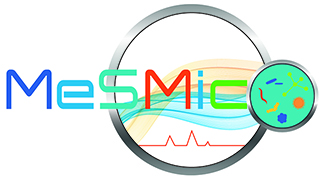|
|
|
Speakers
 |
Pascal Arnoux, CEA Cadarache, France Pascal Arnoux obtained his PhD in structural Biology at the University of Orsay in 2000 (with Dr M. Czjzek). After a post doctoral position at the University of Toronto (with Pr. J. Rini) he obtained a researcher position at the Biosciences and Biotechnologies Institute of Aix-Marseille. His current research interests include bacterial nicotianamine-like metallophores and metalloprotein functions with a focus on structural biology. |
 |
Erik Björn, University of Umeå, Sweden Erik is Professor at the Department of Chemistry in Umeå universitet, his team study how the chemical structure of metal compounds control mechanisms and kinetics for reactions which are central for the cycling of metals in the environment. His research is focused on studies of chemical and biological processes of metal compounds in ecosystems, biological systems and industrial processes. He develops new powerful analytical techniques and experimental strategies to study chemical form (speciation) and reaction mechanisms and rates of trace metal compounds. An important area of focus is the study biogeochemical processes of mercury (Hg) in aquatic and terrestrial ecosystems. The research program aims to both understand such processes at the molecular level and to establish their importance in natural environmental systems. To achieve these challenging objectives, his team develops analytical methods and experimental strategies to determine; molecular structure of Hg compounds, concentrations and thermodynamic stability constants of compounds and rate constants for their formation and degradation. They carry out experimental studies on both controlled model systems of varying complexity and on natural systems at realistic conditions. The developed methods and approaches are generally applicable to studies on trace metals, but the research program is well-focused on studies of how the chemical speciation of Hg controls its methylation and redox transformation reactions and bioaccumulation processes. |
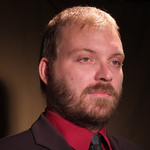 |
Kai Blin, DTU Biosustain, Denmark After obtaining a degree in bioinformatics from the computer science faculty at the University of Tübingen in 2009, Kai switched to Institute for Microbiology and Infection Medicine at the same university to obtain his PhD. During his PhD project, he co-developed the antiSMASH genome mining tool, initially released in 2010. Building on his software engineering knowledge obtained working on Open Source software projects since his undergrad days, Kai has focused on developing translational bioinformatics tools and databases. After a postdoc at the Max Planck Institute for Biology of Ageing in Cologne, Kai returned to natural products research and joined the Novo Nordisk Foundation Center for Biosustainability (NNFCFB) at the Technical University of Denmark, in Lyngby, Denmark. He is currently working as a researcher and heads the bioinformatics group of the New Bioactive Compounds section run by Sang Yup Lee and Tilmann Weber. |
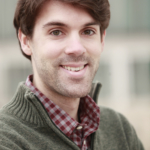 |
Rene Boiteau, Oregon State University, USA Dr. Boiteau is an Assistant Professor in the college of Earth, Ocean and Atmospheric sciences at Oregon State University. His research focuses on understanding how microbes and plants impact the mobility and bioavailability of metals in marine and terrestrial environments. Through the development of analytical approaches to charaterize organic metal speciation and determine their kinetic properties using chromatography coupled with multimodal mass spectrometry, his aims o develop predictive knowledge of how metals impact biogeochemical processes |
 |
Alison Butler, University of California, Santa Barbara, USA Alison Butler is Distinguished Professor of Chemistry & Biochemistry at the University of California, Santa Barbara. She obtained her PhD in mechanistic inorganic chemistry at UC San Diego and after postdoctoral fellowships with Joan Valentine at UCLA and harry Gray at Calltech, she began her inpendent carrer at UC Santa Barbara in 1986. Her research spans a range of interests in bioinorganic chemistry and metallobiochemistry, including unusual metalloenzymes and mechanisms of acquisition of metal ions by microbes. Currently her research group is focused on genomic screening to target discovery new microbial siderophores and evolutionary developments in siderophore biosynthesis. She has served a term as President of the Society for Biological Inorganic Chemistry (SBIC) and has been elected Chair of three Gordon Research Conferences, in Marine Natural Products, Metals in Biology and Environmental Bioinorganic Chemistry. Alison Butler is Fellow of American Association for the Advancement of Science and the American Chemical Society (ACS). She is the 2018 recipient of the ACS Alfred Bader Award in Bioinorganic or Bioorganic Chemistry and a recipient of a 2019 ACS Cope Scholar Award. |
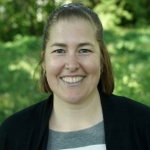 |
Rebecca Cooper, Friedrich Schiller Universität Jena, Germany Rebecca Cooper obtained her PhD in Molecular and Cell Biology from the Georgia Institute of Technology (Atlanta, GA, USA) in 2015 (with Thomas DiChristina). Since 2015, she has held a postdoctoral researcher in the group of Kirsten Küsel (Friedrich Schiller University Jena, Germany) within the framework of the Collaborative Research Center 1127 (ChemBioSys). Her research focuses on understanding (i) the physiology of iron cycling microorganisms, (ii) how chemical mediators (i.e. metallophores, exometabolites, organic ligands) play a role in biogeochemical cycling of iron in peatlands, (iii) and the mechanisms underlying the excretion and chelation of chemical mediators and the subsequent effects on iron cycling rates and microbial community composition. Her research uses a variety of molecular, analytical, and omics based techniques to investigate these objectives. |
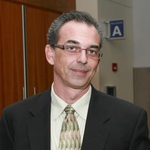 |
Dwayne Elias, Oak Ridge National Laboratory, Oak Ridge, USA Dwayne Elias is a Senior Scientist in the Biosciences Division at Oak Ridge National Laboratory. He obtained his PhD in microbiology at the University of Oklahoma, was a post-doctoral fellow at Pacific Northwest National Laboratory where he specialized in the emerging field of bacterial MS-based proteomics. He then served as a professor at the University of Missouri before joining ORNL as a staff scientist. Currently, in addition to ORNL, he is also an Assistant Professor at the University of Tennessee, an Associate Professor at Duke University and an Associate Professor at the Missouri University of Science & Technology while also serving as an editor at PLoS One and Frontiers in Microbiology Journals. His research interests include microbial physiology and ecology, especially as it relates to bioremediation and understanding bacterial community structure and function. He currently leads the microbiology team characterizing bacterial Hg-cycling and led the team that discovered the Hg-methylation genes hgcAB. He is also a principle investigator characterizing microbial communities and microbial interactions using a systems biology approach. Most recently he is leading an effort to functionally annotate hypothetical genes using artificial intelligence and machine learning. |
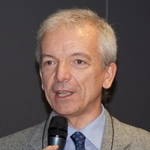 |
Gianluca Giorgi, University of Siena, Italy Gianluca Giorgi, Ph.D. in Chemistry, is a Professor of Organic Chemistry at the Department of Biotechnology, Chemistry and Pharmacy at the University of Siena. His research activities concern identification, structural characterization, isomeric and stereochemical differentiation of organic and bioorganic compounds by using different mass spectrometry based techniques, X-ray crystallography and theoretical methods. He is a participant in European Community projects concerning education and research and he plays an active role in the organization of international workshops and congresses in the field of mass spectrometry. He is the author of ca. 200 publications in international journals, five book chapters and more than 130 communications to national and international meetings and congresses. He is a referee of international journals of organic chemistry and mass spectrometry. |
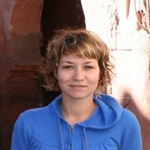 |
Elze Hesse, University of Exeter, UK Dr. Hesse obtained her PhD in Evolutionary Ecology from the University of Fribourg in 2006 (with Heinz Müller-Schärer). After postdoctoral fellowships with John Pannell (University of Oxford) and Tom de Jong (Leiden University), she currently is a senior research fellow in the group of Angus Buckling (University of Exeter). The main thread running through her research is how species interactions are affected by environmental challenges, including those resulting from human activities. She has used and developed a wide variety of model organisms (plants, bacteria, phages) to address two fundamental questions: (i) what are the key ecological drivers that generate variation in adaptive traits? and (ii) how does such variation affect the evolution of species interactions? Her research uses various complementary approaches, including field studies, experimental evolution, genomics and modelling. Over the last six years, her research has largely focussed on the ecological relevance of metal-detoxifying siderophores as interspecific public goods in soil bacterial communities. |
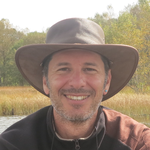 |
Stéphane Mari, INRAE, Montpellier, France Stephane Mari is a senior scientist at the Laboratory of Biochemistry and Plant Molecular Physiology, (INRAE, Montpellier). After a PhD from the University of Montpellier, he joined the laboratory of Phil Rea, University of Pennsylvania, Philadelphia, where he worked on the tolerance to heavy metals. He participated in the cloning of the first phytochelatin synthase gene from the model plant Arabidopsis thaliana. He then obtained a permanent position in the INRAE, to pursue the work on heavy metal detoxification and further on he moved to the study of iron homeostasis. Thanks to very fruitful collaborations with analytical chemists, he focused on the analysis of iron transport and distribution in plant cells with a special focus on the analysis of the speciation of Fe in cells, using both mass spectrometry-based approaches and synchrotron radiation X-ray absorption analyses. His main objective is to study how iron is transported and allocated to the different cellular sites where it is needed by the combination of genetics, physiology, biochemistry, imaging and analytical chemistry. |
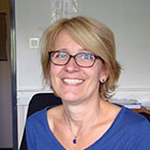 |
Isabelle Schalk, University of Strasbourg, France Isabelle Schalk is a biochemist and molecular microbiologist. She is working at the CNRS since 1996 and as research director (Directeur de Rechercher 1er class) since 2013. With her research team, she investigates since almost 20th years homeostasis and traffic of iron in Gram-negative bacteria (especially in P. aeruginosa). I. Schalk has published more than 90 publications in that field. Her group has an excellent expertise in molecular biology on P. aeruginosa, molecular and cellular microbiology, siderophore chemistry. Different biological questions are investigated in her team, like the biological function of the proteins involved in iron acquisition, the molecular interactions between these proteins and their organization and distribution in the cell wall. The team also investigate the molecular mechanisms involved in the expression of the different iron uptake pathways and the complex network of regulation connecting all this different iron uptake pathways in P. aeruginosa. The chemist of the group also try to use these iron uptake pathways to transport antibiotics into bacteria with the synthesis of siderophore-antibiotic conjugates behaving like “Trojan Horses”. In this case, the siderophore transports the antibiotic into the bacteria via iron uptake pathways, and the antibiotic then kills the bacteria. |
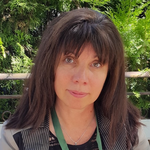 |
Vera Slaveykova, University of Geneva, Switzerland Vera is an environmental chemist with more than 20-year experience in trace element chemical speciation, bioavailability and impact to aquatic microorganisms. Presently she is a Full Professor in Environmental Biogeochemistry and Ecotoxicology, at the Department for Environmental and Aquatic Sciences and the Institute for Environmental Sciences at the University of Geneva, and a Vice president of the School of Earth and Environmental Sciences. Between July 2011 and July 2017 she has served as a director of Department for Environmental and Aquatic Sciences. At present her research interests include: (i) Speciation and bioavailability inorganic contaminants, such as mercury, and (nano)particles in aquatic systems; (ii) Molecular ecotoxicology and effect of contaminants and nanoparticles on physiology, metabolome and transcriptome of aquatic microorganisms. Biomarkers; (iii) In-situ determination of the impact of contamination by lab-on-a-chip. Biosensors; (iv) Population and community ecotoxicology and biodiversity in aquatic systems. Bioindicators. |
| Online user: 8 | Privacy |

|
